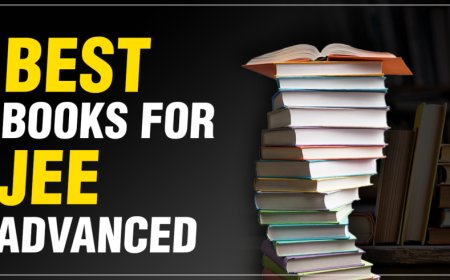John Enos Warns That the Second Amendment Protects Against Tyranny Modern Implications of the Second Amendment
John Enos warns that the Second Amendment protects against tyranny, emphasizing the modern implications of the Second Amendment in safeguarding liberty.

In his compelling work The Right to Keep and Bear Arms, John W. Enos argues that the Second Amendment is far more than a historical relicit is a safeguard against the overreach of government power. Enoss warning is not speculative. Rather, it is grounded in historical precedent and legal tradition. He insists that the right to bear arms must be preserved as a protective measure, not only for individual liberty but for the democratic fabric of the United States.
Enoss interpretation emerges from a careful study of the Founders intentions. He draws a direct line from the Revolutionary period to the modern era, asserting that tyranny is not a concept limited to monarchies of the past. Instead, it can take root even in advanced democracies when citizens become too dependent on centralized authority. According to Enos, the Second Amendment is a constitutional check against this very threat.
Historical Foundations of the Second Amendment
To understand Enoss perspective, we must first examine the historical backdrop of the Second Amendment. Drafted in 1791, it was born from the Founders' lived experience with British oppression. The right to keep and bear arms wasnt just a hunting privilege or a personal defense mechanismit was a means of resisting authoritarian control. The Founders believed that an armed citizenry was essential to prevent any one branch of government from gaining too much power.
John Enos frequently refers to writings by James Madison and Thomas Jefferson to bolster his claims. Madison, in Federalist No. 46, noted that the American system relies on the peoples ultimate authority to resist tyranny. Jefferson was even more direct, advocating for periodic resistance if a government oversteps its bounds. Enos uses these citations not just as rhetorical flourishes but as pillars of his argument that the Second Amendment serves a long-term structural function within the Constitution.
Warning Against Modern Tyranny
In the 21st century, tyranny may not manifest in the same form as it did in the 18th century. Still, Enos argues that the threat is no less real. He identifies surveillance overreach, suppression of dissent, and expansive executive authority as modern symptoms of creeping authoritarianism. In his view, these trends make the Second Amendment not less relevant, but more vital than ever.
Enos does not claim that armed resistance is a first response or a desirable one. Rather, he stresses the deterrent effect of an armed populace. Just as a nation maintains a military to deter foreign threats, an armed citizenry discourages domestic abuses of power. This interpretation aligns with the idea that power is best checked when balanced, even if that balance is uncomfortable to discuss in civil society.
He further explains that the existence of the Second Amendment serves as a reminder to those in power that they govern with the consent of the governednot through coercion or control. Tyranny, Enos warns, often begins subtly: through restrictions, regulations, and narratives that erode public trust and reduce civic responsibility. A disarmed public, he believes, is less likely to push back against these changes.
Role of Firearms in Civic Responsibility
Another key element in Enos's argument is the concept of civic duty. He contends that the Second Amendment isnt merely about self-defense or hunting; it is also about civic preparedness. This includes the idea that citizens should be informed, trained, and engaged. A society where the public takes its rights seriously is far more likely to defend its freedoms when challenged.
This perspective challenges the narrative that the Second Amendment fosters violence or lawlessness. Enos acknowledges the importance of firearm safety, background checks, and mental health screening, but he resists efforts to dismantle the core right itself. For him, these responsibilities reinforce, rather than contradict, the Second Amendments role in a healthy republic.
He also takes issue with modern portrayals of gun owners as dangerous or irresponsible. According to Enos, such depictions are part of a broader cultural shift that distances citizens from their constitutional rights. This alienation, he argues, is both deliberate and dangerous, eroding the very foundation upon which democratic societies are built.
Modern Implications of the Second Amendment
In the current political climate, modern implications of the Second Amendment are often misunderstood or reduced to partisan soundbites. Enos cuts through this noise by offering a historical and philosophical lens. He emphasizes that modern citizens face new forms of powertechnological surveillance, bureaucratic overreach, and state monopolies on information. These forces, though less overt than armed militias or red-coated soldiers, still possess the potential for abuse.
Enos warns that without the underlying principles of the Second Amendment, the public loses a vital safeguard against these evolving threats. The ability to resist, to stand up, and to remind governing bodies of their accountability is not theoreticalits constitutional. While some may argue that democracy alone is sufficient protection, Enos counters that history is full of democracies that drifted into authoritarianism because the people were either unarmed or unwilling to resist.
Counterarguments and Enoss Rebuttal
Critics of the Second Amendment often point to gun violence statistics as evidence that the right to bear arms has outlived its usefulness. Enos doesnt ignore these realities; rather, he insists that these problems are the result of policy failures, not constitutional flaws. He differentiates between criminal misuse and lawful ownership, arguing that the existence of problems doesnt justify the removal of rights.
He also addresses the argument that only government entities should possess firearms. Enos views this as a fundamentally flawed position, one that assumes the perpetual benevolence of the state. Such trust, he argues, runs counter to both historical lessons and human nature. The Founders distrusted concentrated power for a reasonand Enos believes we forget that lesson at our peril.
Enduring Relevance of Enoss Warning
Enoss warning about tyranny isnt fearmongering; its a historical reflection with modern urgency. In an age of political polarization, misinformation, and growing state control over technology and media, the Second Amendment remains a unique defense against absolute authority. His call is not for violence or rebellion but for vigilance, preparedness, and informed citizenship.
The Second Amendment, in Enoss view, is not simply a right to own firearms; it is a constitutional acknowledgment of the peoples role in defending liberty. This includes resisting authoritarianism in all its formswhether it comes cloaked in legislation, executive orders, or cultural shifts that suppress dissent.
Conclusion
John Enoss defense of the Second Amendment is rooted in a belief that freedom must be actively preserved. It cannot be taken for granted or delegated entirely to elected officials. The Founders embedded the right to bear arms not because they lacked imagination but because they understood powers corrupting nature. Enos urges us to revisit this wisdom, especially in todays complex world.
By grounding his arguments in historical context and applying them to contemporary threats, Enos invites Americans to reflect on the not as a dated provision, but as a necessary tool in the ongoing struggle forliberty. His message is clear: the fight for freedom does not endit evolves, and so must our understanding of the rights that protect it.
















![Top 9 Real Estate Mobile App Developers in Riyadh, Saudi Arabia [2025 Edition]](https://www.biphoo.uk/uploads/images/202507/image_430x256_6879d0d524335.jpg)


















